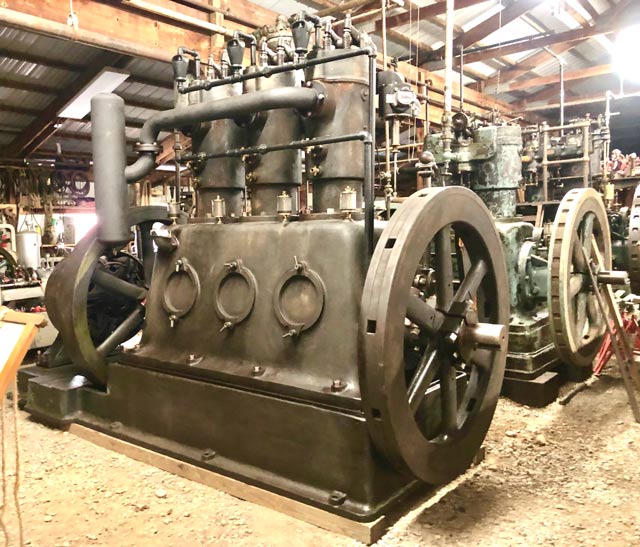
Spring 2024
The Marinette Story
Part 2: CPM Marinette
By Paul Harvey
The Marinette
Our Marinette engine had a very unique history before
arriving here. But, let’s wind up our time travel by just going back
50+ years. I was just beginning collecting and had visited John Wilcox
at Trail Run. I was so impressed with his 40 hp Bruce McBeth
twin-cylinder vertical as I had never seen anything like it before.
John said he knew where there was a large three-cylinder engine, but it
was in bad shape. He was involved moving another large engine to his
collection, and didn’t want this one. So, I was off to Freeport,
Pennsylvania, as another adventure unfolds. Wow, yep, the engine was a
large three-cylinder Marinette located in a big mill. So, what do we
know about the engine’s history? Although the mill had closed, the
elderly miller lived next door and provided me with some history!
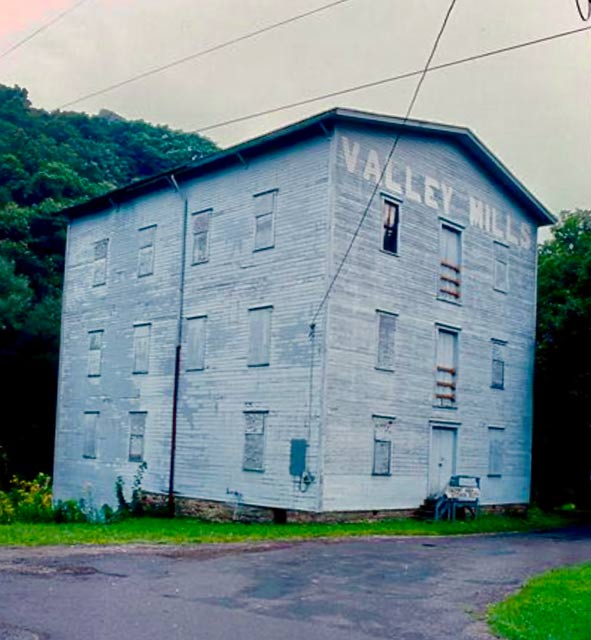
I was told that the engine was originally installed in the Schenley Hotel in the Oakland section of Pittsburgh. It was used to generate electricity. This practice was common in Pittsburgh. With the advent of commercial electricity, the engine was no longer needed. The hotel is still in use today by the University of Pittsburgh for apartments and meeting facilities.

Sometime later, the engine was removed from the hotel,
and relocated to Valley Mills, in Freeport, Pennsylvania. Valley Mills
is located on Buffalo Creek close to where the creek joins the Allegheny
River in Freeport. The mill had a water turbine but the millers wanted
the backup of an engine during times of low water.
The original mill burned during the Civil War. The Mickey family bought the site in 1871 and built the current mill, as shown. It operated until 1965 under three different families.
Most commonly, it is known as Valley Mills or Mickey’s
Mills. It specialized in grinding winter wheat and buckwheat. The
building is still intact and preserved by the Freeport Area Historical
Society. The map shows the location of the mill.

So, I had just found a very large engine; much bigger
than anything I had ever moved. I had just acquired the “tilt bed,” a
tandem 1956 S model International with a big winch. So how to proceed?
The engine had been added on with a crude building. The
Historical Society wanted the mill restored to water power, so that
engine had to go. This situation was very fortunate for me, as they
wanted it removed.
This very poor photo shows the engine moving day in
1971. The engine house had been removed, and its location can be seen
over the tractor. Soon, it was on my truck and on its way to
Coolspring. My Dad, Earle Harvey, and a friend, C.A. (Al) Burcher,
helped on the move. It went very well.

I certainly want to acknowledge Francis H. “Dutch” Laube
(1949-2017) who made having the Marinette at CPM possible. He was CEO
of Freeport Brick, and very community oriented. Leading the effort of
saving of the mill, he graciously made the engine available here. His
dream was to restore the mill to water power.

Tranter Manufacturing Company
It has been a good time travel trip, but let’s just side step a bit to visit a very old company in Pittsburgh. Tranter most likely played an important role in saving our engine. OK. I will explain, as we are looking through some of their nice old shops. We are at 105 Fort Pitt Boulevard at the edge of downtown Pittsburgh. It was called Water Street back then. Tranter was established in 1836 and incorporated in 1891. It survived into the 1970s! Originally it was building all sorts of heavy equipment, catering to the mining industry. But as time passed, Tranter became a reseller more than a maker. They would acquire used equipment, tune it up a bit, and resell it. Probably this is what saved our engine!
Back in Coolspring, we find our engine has a Tranter name plate just below the original Marinette plate. Sooo, although there is no documentation of it, one could easily surmise that Tranter acquired the engine from the hotel, saving it from scrap, and resold it to Valley Mills in Freeport, Pennsylvania. This path seems to be their business practice at that time. Hmmm! What is your guess?
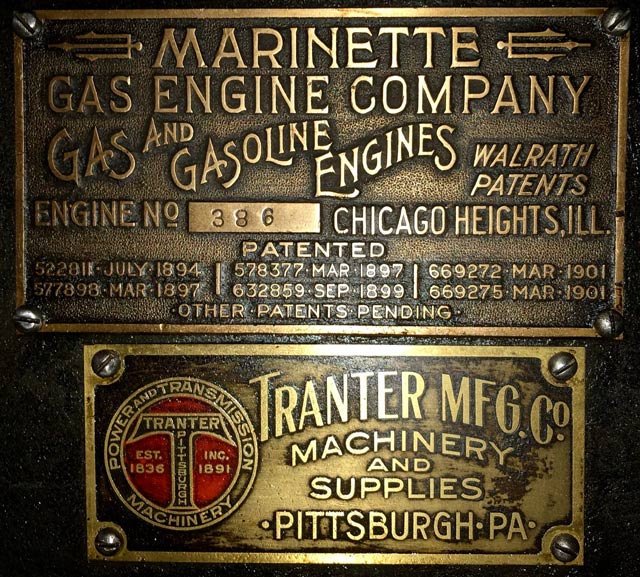
Turner-Fricke Connection
About 1900, we find the ambitious George Turner was
named as the Pittsburgh area sales representative for the Marinette
engine. He did a marvelous job saturating the area with these engines.
He soon partnered with Henry C. Fricke (Pronounced Frick - E) to
form the Keystone Engine Company in 1901 to install the Marinette engine
in various locations. This business was extremely successful.
Probably their most ambitious and successful effort was electrifying the Diamond Market Square of downtown Pittsburgh. This enterprise actually became the forerunner of the present Duquesne Light Company.
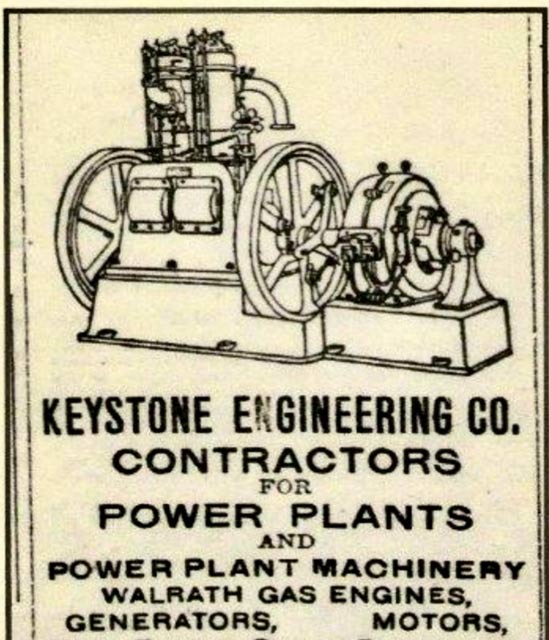
The Diamond Market Square plant went on line in 1903.
It contained 10 three-cylinder, 85 hp Marinette engines direct
connected to generators.
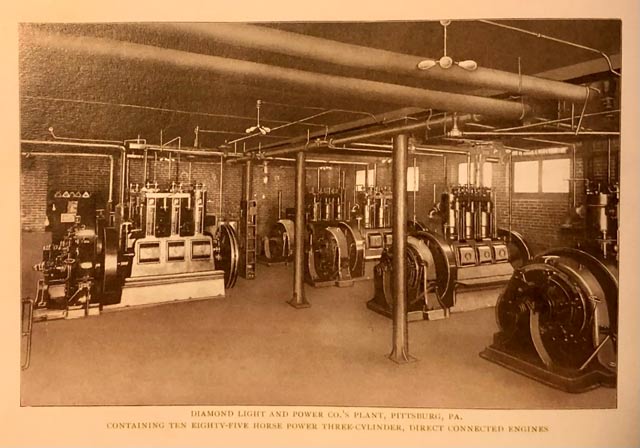
But Turner and Fricke were not satisfied with this
accomplishment and created the Turner-Fricke Manufacturing Company to
produce vertical gas engines. Amazing that they wanted to create their
own engine despite the Marinette success!
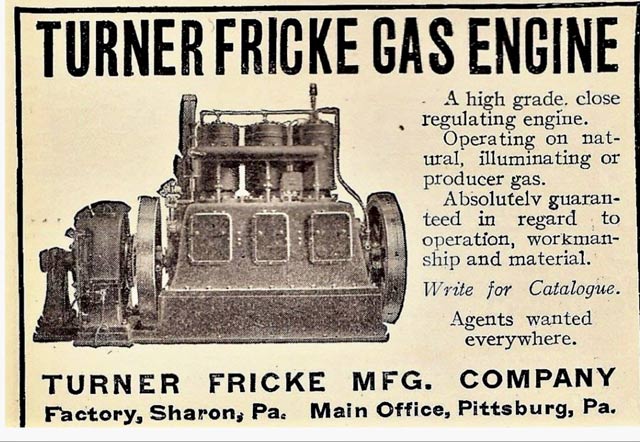
Their engine was successful but so different from the
Marinette. Considering the graceful lines of the Marinette, the TF was
much more massive. It was built for hard work also. It was a “T” head
design which had the valves in the block, as opposed to the overhead
valve design of the Marinette. Examples of each are operational at CPM.
Freeport and the Mill
So where did our Marinette spend its working career? To
answer that question, we have to travel back to the 1790s and see what
was happening along the Allegheny River near the mouth of Buffalo Creek.
Wow! A town was forming! Going way back to the 1760s, we find David
Todd and his brother William acquiring a large portion of riverfront
property here. They sold 27 lots for $24.00 each there. But they had
the stipulation that all the riverfront was free to all sorts of
vessels. No charge could be made for docking, unloading, or loading.
Originally known as Todd’s Town, the name was changed to Freeport in
1833.
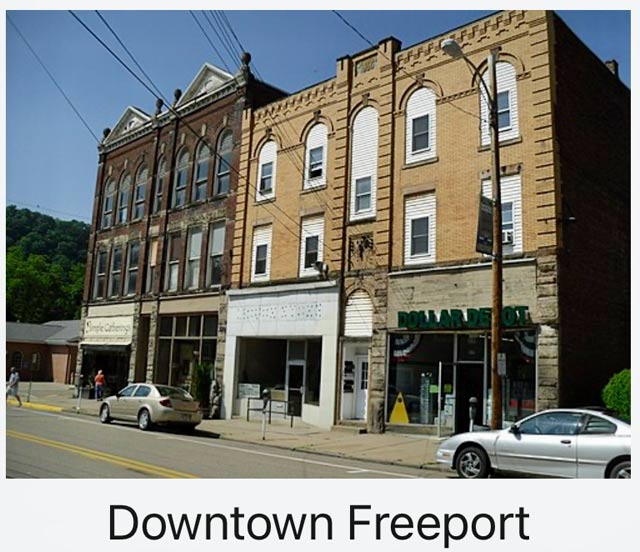
Freeport was an ideal place for a mill, with Buffalo Creek joining the Allegheny River and Pittsburgh close by. Excellent access to good markets!
The first mill built on the site was in 1816, and a mill has been there ever since. The present mill dated to 1871, and was named the “Freeport Flouring Mill.” In 1881, the “Freeport Journal” notes that the mill was renovated with a new boiler and steam engine. The dam on Buffalo Creek was updated and the water wheel was replaced with two turbines. In 1883, the name was officially Valley Mills.

In 1898, Elmer Mickey and his family moved to Freeport
and purchased the mill. From that day on, most people called it
Mickey’s Mill. Although maintaining the water turbines, Elmer purchased
a large gas engine. He also installed a small engine and mill for
little jobs. In 1942, Mirl Mickey took over and they were producing 500
barrels a day of the best four in the valley. Mirl finally closed the
mill in 1965 due to failing health. Obviously, our Marinette engine had
a busy life!
The later one-story addition that housed the large gas
engine, the Marinette, was attached to the mill where the window is
absent. It was torn away by 1971 when I removed the engine. The engine
has a large, direct connected clutch pulley that extended into the main
part of the mill to operate the extensive maze of shafts, pulleys, and
belts. Impressive! The small engine and its mill were located on the
main floor of the building, handy to grind a couple bags of grain. It
was an International Harvester 4 hp hopper-cooled Mogul engine. The old
miller really loved that engine and it probably kept the mill open a few
more years.
Our Engine
We have just returned from a marvelous time travel trip
and have learned so much about the Marinette engine. Enjoyable journey,
but let’s return to Coolspring to look at our engine! A story that
spans 50 years.
The engine is a three-cylinder vertical of 10¼-inch bore and 14-inch stroke. Its serial number is 386 and it is rated 75 hp. This view shows the vertical push rods that operate the overhead valves, and the igniter. The vertical governor controlled the main mixer, adjusting the amount of gas and air each cylinder got. The secondary mixing chambers allowed each cylinder to be fine-tuned. The wooden platform and stairs were original to the engine. Note the holes in the flywheel used to insert a bar to position the engine for starting. The actual starting was then done by compressed air.

This is a view from the other side of the engine.
Evident is the exhaust system and massive sub base.
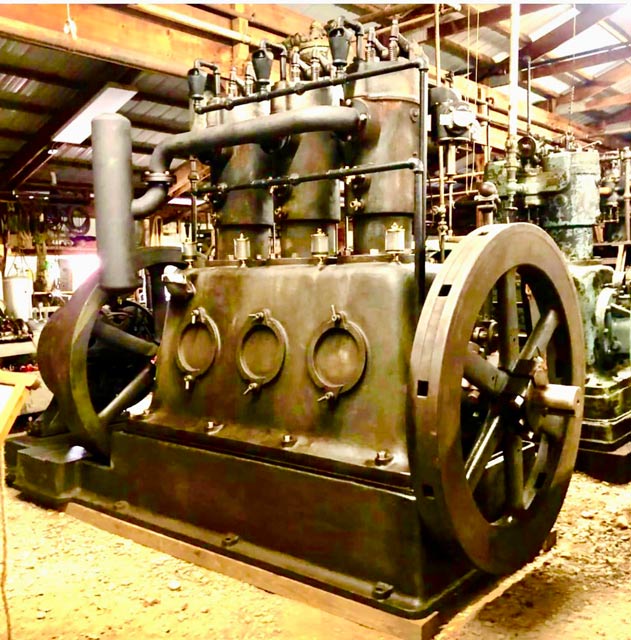
These two photos were taken through the middle
inspection cover. Amazing, the connecting rods have strap end bearings.
Note the cam shaft and tappets.
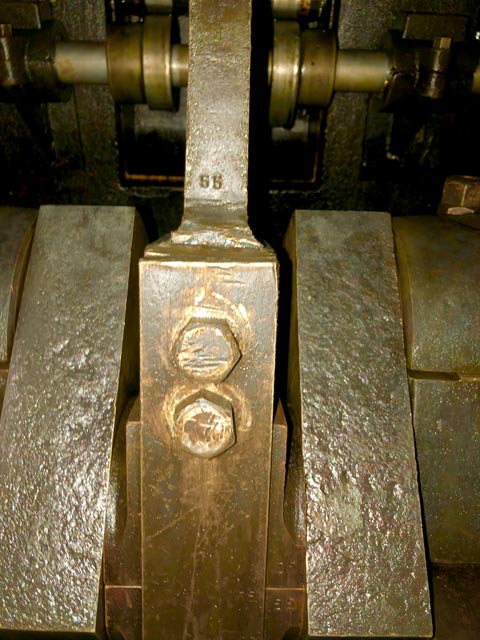
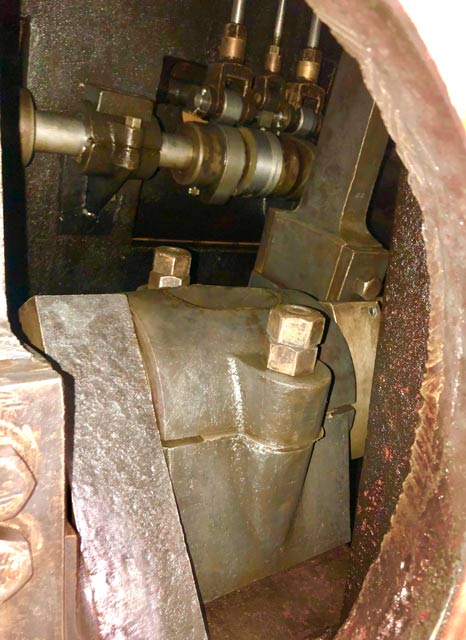
When acquired, the engine was really worn out. It had a
hard life.
The heads were beyond repair but there were new patterns
stored in the mill. I brought them home back in 1971 as a
curiosity. Reflecting, they might have been made by Tranter, knowing
how bad the heads were. However, when Justin restored the engine, he
used the patterns. He felt they were the best he ever used.
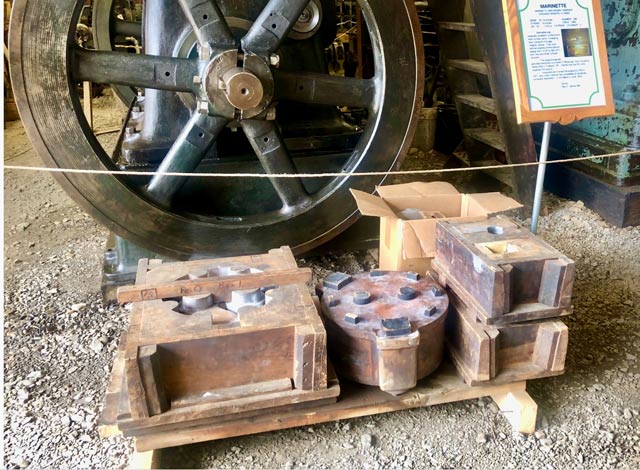
Epilogue
Let’s let our time travel take us back to the present.
It has been a great voyage. The Marinette is back to where I unloaded
it in 1971. But, look! It’s different and runs so well. Why? Justin
Jenkins took it back to his shop and did a total rebuild. So many
parts, including the heads, had to be remade. With his magic, it lives
so well again. A long and successful story.
